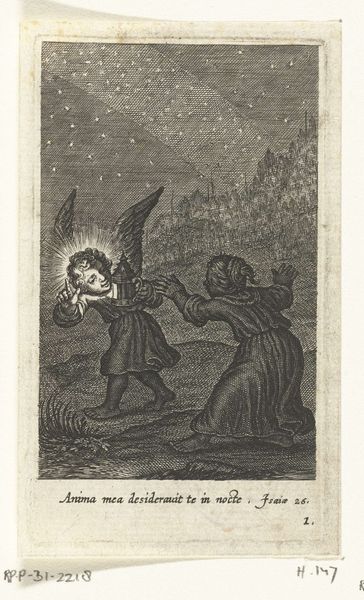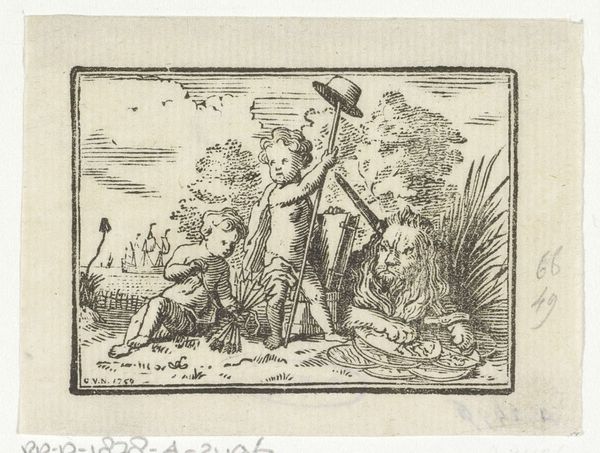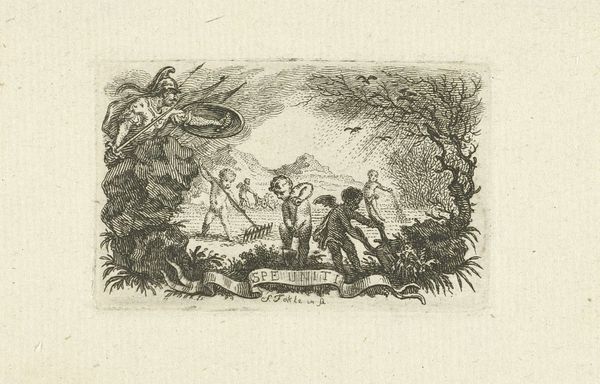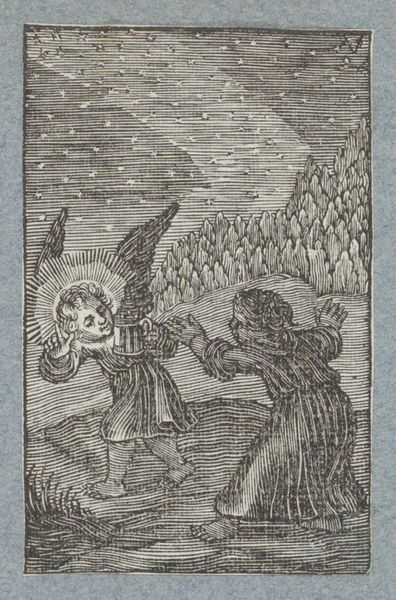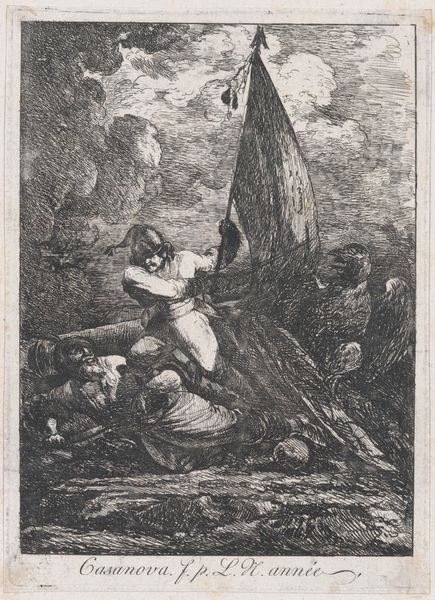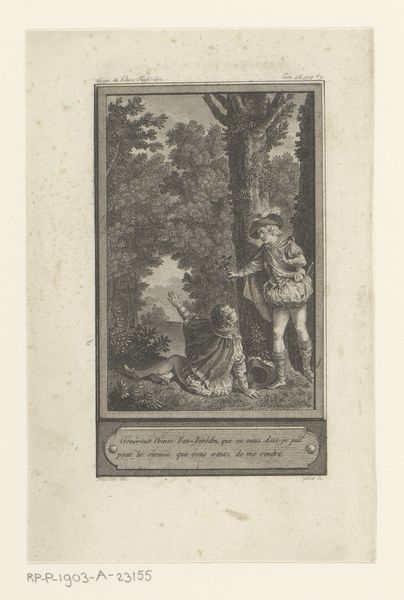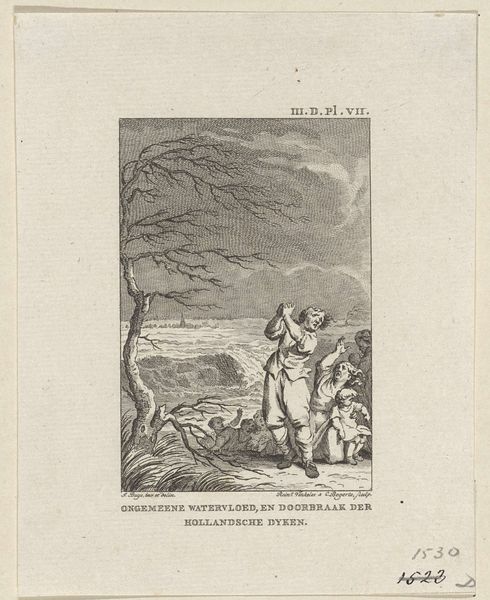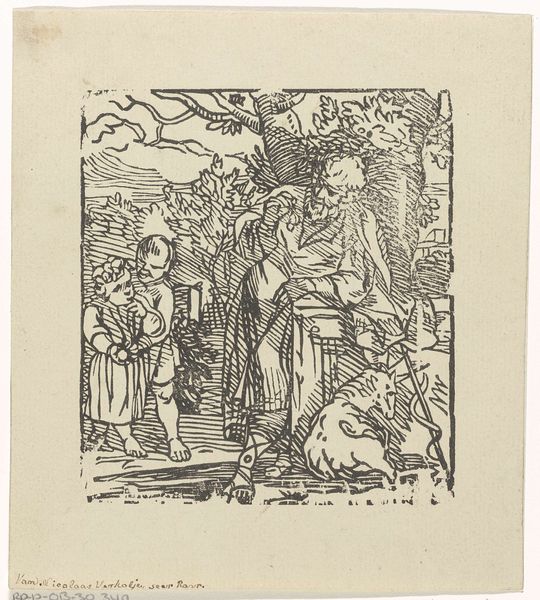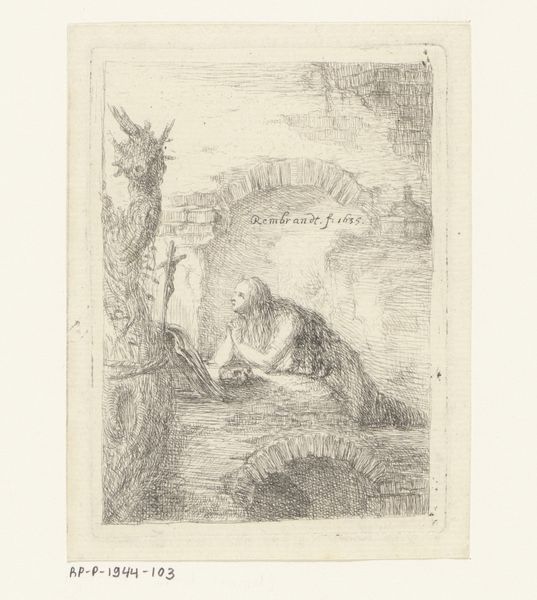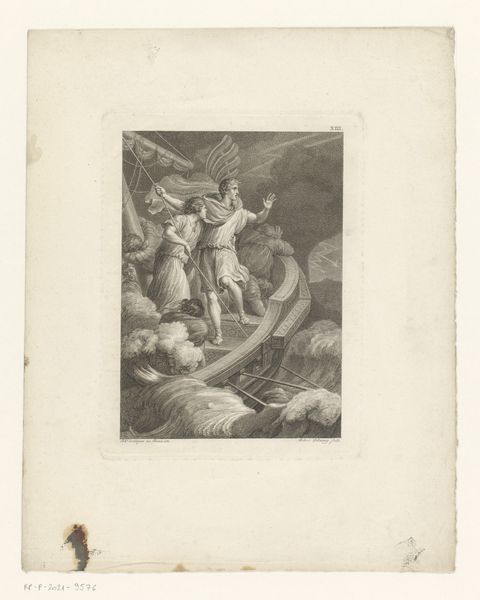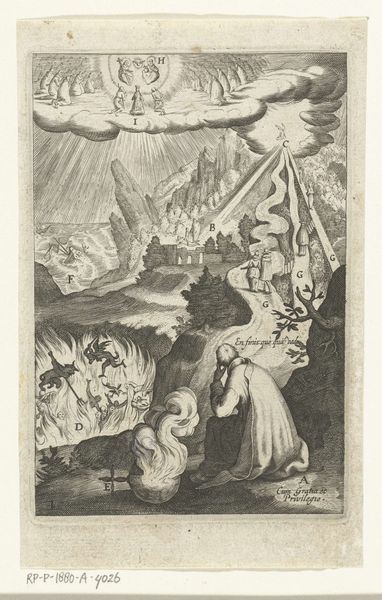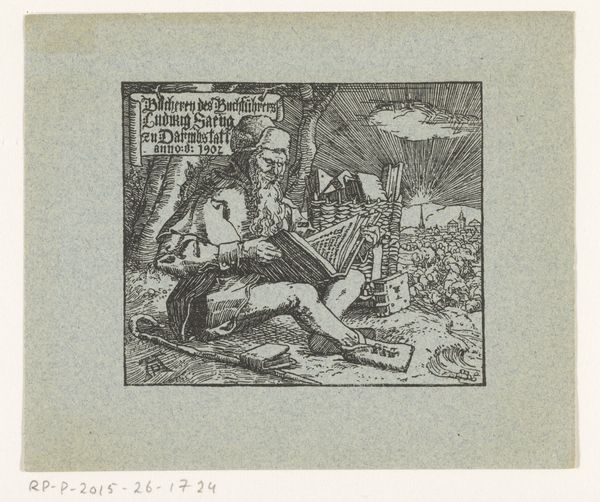
print, engraving
#
narrative-art
#
baroque
# print
#
old engraving style
#
figuration
#
line
#
history-painting
#
northern-renaissance
#
engraving
Dimensions: height 113 mm, width 72 mm
Copyright: Rijks Museum: Open Domain
Curator: Right now, we’re looking at a small but powerful engraving from 1628 titled “Anima mea desideravit te in nocte.” It’s by Christoffel van Sichem the Younger and it's part of the Rijksmuseum collection. Editor: Oh, that’s hauntingly beautiful. The tiny angel figure, practically radiating light against the backdrop of the dense night, I feel like I'm seeing a dream made real. Curator: Indeed, the contrast is striking. As an engraving, it’s all about the lines – the precision and labor involved in cutting into that metal plate, each line contributing to the overall mood. The dense forest on the right almost seems to press in on the figures. Editor: Exactly! And it's interesting, the way he portrays the fabric; so many delicate lines rendering texture that invites the eye. I'm wondering about the type of tools they used, you know? Because creating such fine lines with that level of detail and depth must have required exceptional craftsmanship. Were there particular guilds dominating printmaking at the time? Curator: Definitely. Printmaking in the Northern Renaissance and Baroque periods was closely tied to artisanal workshops, often family-run. Sichem’s father was also a prominent printmaker, so skill and knowledge were passed down, and carefully guarded as trade secrets, I imagine. Thinking of it now, there's also this quote in Latin here, which translates to "My soul desired you in the night". This, accompanied by this ethereal scene makes me think the message touches themes of spiritual yearning and the search for divine presence amidst darkness. Editor: That context makes it even more poignant. And considering the era, it is clear how deeply entrenched faith was within the culture and that longing for light and guidance during tumultuous times, must've resonated deeply with the audiences then. I think about the engraver's hand, each mark imbued with that cultural weight. It almost makes the object itself a sacred one. Curator: A very tangible connection between faith, labor, and art making that perhaps we lose sight of today. Editor: It’s incredible how much raw emotion can be contained within such a meticulously crafted and, in the end, simple form. Curator: Absolutely. It encourages me to appreciate the material reality and profound human skill woven into this delicate piece.
Comments
No comments
Be the first to comment and join the conversation on the ultimate creative platform.
